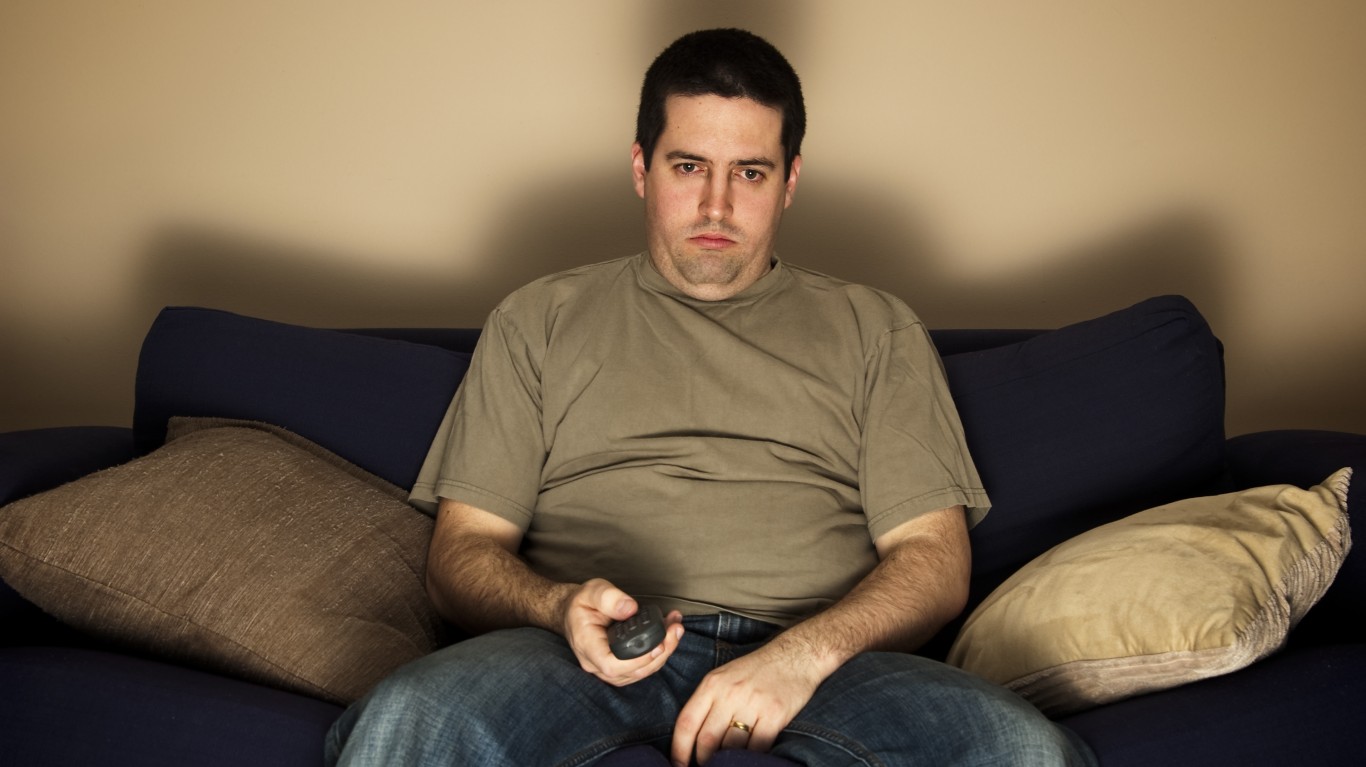
Exercise, with very few exceptions, is good for you. The question is how much? The Centers for Disease Control and Prevention (CDC) reports that exercise makes people feel better, sleep better and think more sharply, and it reduces anxiety. The American Heart Association research shows that exercise is a means of disease prevention and better quality of life. Its scientists suggest 150 minutes of moderate-intensity exercise a day. The American Cancer Society reports that exercise reduces the risk of some cancers.
At the far end of the spectrum, lack of exercise can contribute to dangerous health conditions, which include heart disease and Type 2 diabetes. Lack of exercise can even shorten lifespan.
24/7 Tempo reviewed data on leisure exercise and access to places for physical activity from the County Health Rankings & Roadmaps (CHR) report to determine the cities with the lowest rates of regular exercise. About 22.2% of adult Americans report that they do not get any physical activity in their leisure time.
Five of the 10 cities with the lowest share of adults who work out or engage in any physical activity in their free time are in Alabama. In fact, many of the cities where the fewest percentage of adults are exercising are in the South. Similarly, the cities where most people engage in physical activity are also concentrated in one region of the country.
Consistent lack of exercise appears to play a role in certain unhealthy outcomes. Of the 50 cities we reviewed, only three have an adult obesity rate that is lower than the national rate of 28.5%. Only one city (Williamsport, Pennsylvania) has a lower share of the adult population reporting being in poor or fair health than the U.S. share of 16.0%.
Income also appears to be a factor in whether people spend time exercising. Of the 50 cities we considered, only one has a median annual household income higher than the national median of nearly $62,000. Wealthier people are more likely to exercise as they have more money to spare on gym memberships and working out apparel.
The U.S. city where people get the lease exercise is Gadsden, Alabama. Here are the details:
- Adults who do not exercise: 33.4% (U.S. average: 22.2%)
- Population with access to places for physical activity: 45.2% (U.S. average: 83.9%)
- Adult obesity rate: 36.1% (U.S. average: 28.5%)
- Population over 20 with diabetes: 13.5% (U.S. average: 8.5%)
- Adults in poor or fair health: 23.0% (U.S. average: 16.0%)
- Median household income: $45,868 (U.S. average: $61,937)
Methodology: To determine the city getting the least exercise, 24/7 Tempo created an index consisting of the share of adults who are physically active and the percentage of the population with access to places for physical activity in all 381 metro areas in the United States. Both measures came from the CHR, a collaboration between the Robert Wood Johnson Foundation and the University of Wisconsin Population Health Institute.
Obesity rates (the share of adult residents who report a body mass index of 30 or greater), as well as the share of adults who have access to exercise facilities and the share of the population reporting to be in fair or poor health, also came from CHR 2019. All CHR data is for the most recent year available. The age-adjusted percentage of the total population 20 years and over diagnosed with diabetes in 2016 came from the U.S. Diabetes Surveillance System, provided by the CDC.
Diabetes age-adjusted rates were provided at the county level, which was then aggregated to the metropolitan level using a weighted average, based on the percentage of the 2016 five-year population of each county within each metro area. The 2018 population figures, as well as median household income, and poverty rate came from the American Community Survey 2018 five-year estimates.
The number of fitness and recreational sports facilities that feature exercise and other active physical fitness conditioning per 100,000 people came from the Census Bureau’s County 2017 Business Patterns.
Click here to see all 50 U.S. cities where people get the least exercise.
Thank you for reading! Have some feedback for us?
Contact the 24/7 Wall St. editorial team.



